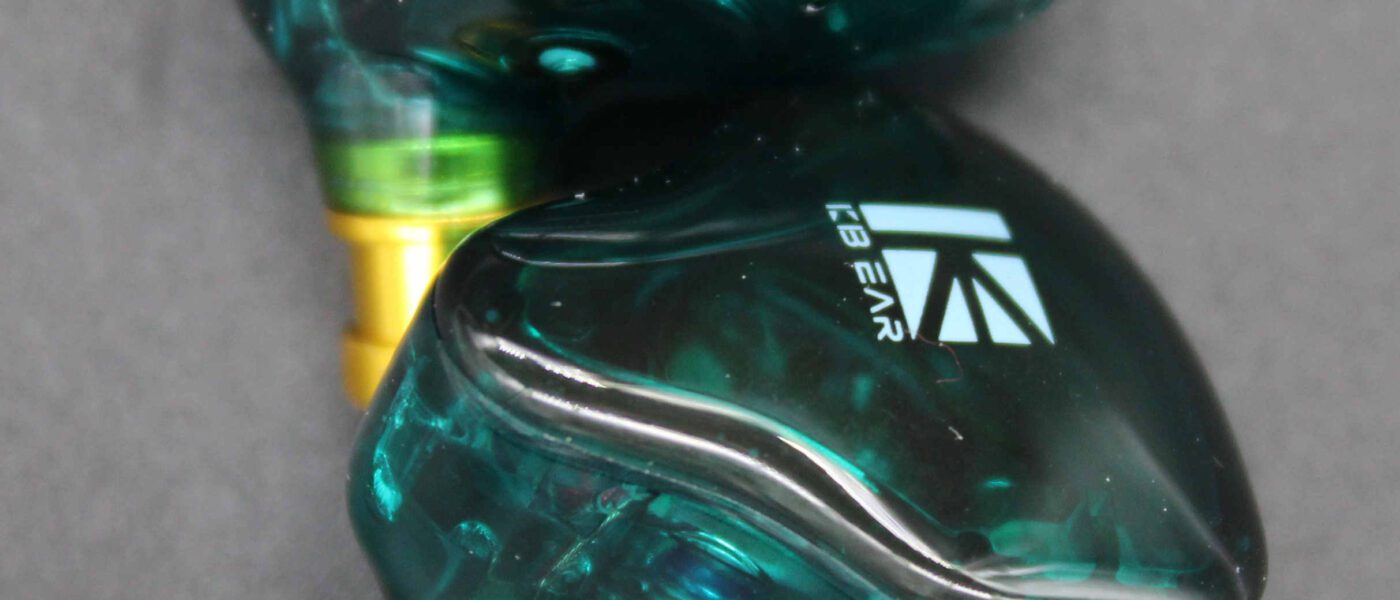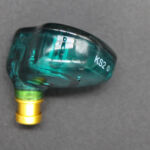KBear KS2
disclaimer: KBear volunteered the KS2 for review and graciously sent them. I have no financial interest in KBear or any of its resellers, nor have they had any input into the content of this review. If you have an interest in KBear, please see their facebook page or Aliexpress store.
Unboxing / Packaging:
Those familiar with the typical small white slip-cover style box will immediately recognize the packaging. Image and name on front, specs on rear of slip cover. Inside, the box, we have the earpieces nestled in foam at the top and a box containing accessories beneath. The kit contains the earpieces, cable, and four sets of silicone tips. Tips are 1 small, 2 medium, and 1 large pair. Remember this is a budget in-ear designed as an improved replacement for smartphone audio with a retail around 20 USD so an extended kit is not expected.
Build/Fit:
The Ks2 uses a very familiar formula with resin shells in 3 parts. The face plate and inner shell are a green co-polymer with a brass nozzle. Faceplates are darker and a bit more opaque than the body with allows the internals to be viewed. The shell is the quasi triangle shape with the nozzles exiting the lowest point and the bi-pin connector exiting the top front. While the shell shape is very common, the KS2 is thinner than many in this style and fit is quite comfortable as it sits more in than on the ear. Nozzles have both a forward and upward rake with a pronounced lip for tip retention. A single vent over the center of the dynamic driver is visible on the under side of the shell. Fit and polish are good with seams tightly sealed and no glue, gaps, or slop. Earpieces are marked KS2 and L/R on the upper surface.
Internals:
The heart of the KS2 is a 10mm dynamic driver with a composite diaphragm and a a single customized balanced armature. The dynamic drivers sits in the main shell while the BA rides in the nozzle. Nominal impedance is listed as 16Ω with a sensitivity of 106 dB/mW. KBear warns that the KS2 was designed for smartphone use and will not benefit from more potent sources. I found this to be true as more powerful sources led to more distortion in the low end as volumes increased. The good news is it does well with smartphones and tablets and you don’t seem to lose much qualitatively as you move down in power.
Cable:
This is a very familiar cable by this point. Those familiar with KB budget offerings will recognize the cable immediately and nothing has changed from previous generations. The south end has the 3.5mm 90º jack with almost no strain relief before the brown 4 strand copper double helix cable exits. The Y shaped plastic splitter is entirely too low on the cable especially with no chin slider provided. Above the splitter a pair of 2 strand twists head north to the preformed earhooks. Connectors are .78mm bi-pin in a squared off hood.
Sound:
Bass:
The Ks2 has a very elevated sub-bass before the mid-bass begins to fall back a bit. The sub-bass has good rumble but is a bit loose as the driver seems to have a slower than average decay. The mid-bass while not as elevated really shows off the lack of driver speed and contributes a good bit of mid-bass bleed into the lower mids as a result. Overall the Ks2 packs a lot of low-end into the mix and performs best with hip-hop and EDM but it won’t satisfy those looking for a lot of bass texture as typically found in string bass or orchestral pieces. Not surprising as the K2s target audience was more the former than the later groups.
Mids:
Lower mids are somewhat obstructed by mid-bass bleed and come across as increasingly recessed as you move up toward the true mids. Guitar tonality is fairly realistic although the slow decay is still evident. Vocals are not accentuated and sometimes fall behind the remaining instrumentation a bit but do have good tonality and texture. If volume is pushed a bit to compensate, it brings vocals up a bit but also increases stridency in the process. The boost in the upper-mids introduces sibilance if the source material has any leaning in that direction anyway. Strings have a bit too much energy as well and tonality comes across as a bit thin and hot on violin as a result. Ultimately the Ks2 is not a mid-centered in-ear and will do well with EDM or house that don’t focus on vocals heavily.
Treble:
Lower treble is emphasized before dropping back as you reach the true treble where it falls back to roughly the level of the mids. I think this saves the Ks2 from becoming really sibilant at times as it doesn’t have the energy to get really fatiguing in the 8-9kHz range. Treble clarity is good, but detail is only average. Snare rattle is good while cymbals can be a bit metallic. Extension is fairly good with a roll-off becoming evident only above about 12kHz. The treble has enough energy to feel open and does exhibit some air.
Soundstage/Imaging:
This is one place the KS2 really excels. Soundstage is larger than average with good depth and width. Height is limited but more than expected in the price class. Seating the orchestra is somewhat difficult as instrument separation is below average and several overlaps of instruments result. I think the driver speed is the biggest issue in the Ks2 as it contriubutes to the lack of seperation, the bleed, and the compression heard as tracks get busier. Layering is average with some of the mentioned compression as tracks get more complex. Imaging is acceptable, but imprecise and while movement is easily discerned, exact placements are less so.
Thoughts/Conclusion:
While it would be easy to think I don’t much care for the KS2, we have to keep in mind this is a sub-25 USD offering designed to improve on what comes with cell phones and principally designed with popular genres in mind. Within the limits of that envelope, the KS2 can perform well and does indeed work best with popular genres where tracks are not overly complex and instrumentation is kept to a handful of voices. While it wont replace the KB04 was my recommendation in the sub-25 market, I can see many enjoying it as an entry level in ear.
-
Bass - 5/105/10
-
Mids - 5/105/10
-
Treble - 7/107/10
-
Soundstage - 7/107/10
-
Imaging - 5/105/10
Summary



















